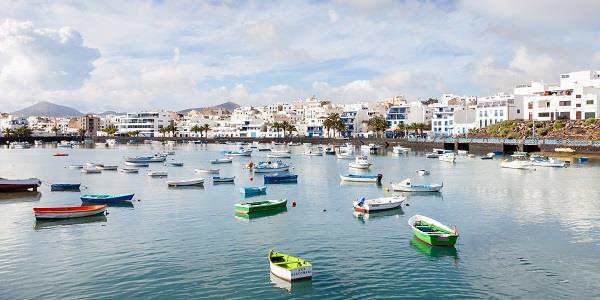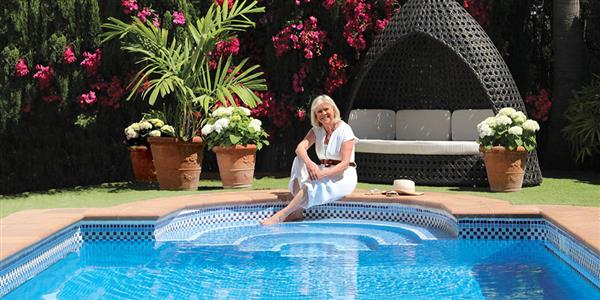
Holidaymakers flying into Arrecife airport en route to Santa Rosa may not wish to loiter in the city. There’s unpacking to be done; the ‘dust of the road’ to be showered off; perhaps a nap to be taken; and the delights of Santa Rosa and its surroundings to be explored and enjoyed.
But sometime during your sojourn, it’s well worth setting aside a day – or part of a day – in the diary to discover Lanzarote’s capital.
Or should that be, new capital? Newish, anyway. The port city started life as a small fishing village, owing its very existence to its proximity to Teguise, the ancient capital (not to be confused with Costa Teguise, where Santa Rosa is located). Over time Arrecife’s star ascended as Teguise’s waned, until the city assumed the role of capital in 1852.
Today, Arrecife is home to around 45,000 people, about 50% of Lanzarote’s total population – a lively, cosmopolitan metropolis replete with culture and history…
…and shops. The place is stiff with retailers; but the long pedestrianised road called Calle Léon y Castillo plays host to a particular concentration. It’s a shopper’s heaven.
But if that’s your idea of hell, don’t let it discourage you from visiting: Arrecife has other attractions.
Like most ports, Arrecife has a vibrancy that you simply don’t get in an inland city. For centuries, Arrecife was the main port gateway to the island due to its proximity to Teguise and its natural deep-water harbour at Los Mármoles — now home to the city’s ferry and container ports. Incidentally, Arrecife is also home to the biggest fishing fleet in the Canaries.
Throughout the 17th and 18th Centuries the ports of the Canary Islands in general and Lanzarote in particular were plagued by pirate raids, and Arrecife was attacked with monotonous regularity.
Today the legacy of those incursions can still be seen in the two squat castles that stand guard over Arrecife’s natural harbour – low on beauty, high on fortification:

the Castillo San Gabriel, dating from 1590 and now home to a museum dedicated to the history of Arrecife;

and the Castillo San Jose, originally built not just to repel pirates but also to alleviate poverty on the island in the wake of the major volcanic eruptions of the 1730s, as a result of which it became known locally as the ‘Fortress of Hunger’.
The latter castillo is still feeding folks to this day, as it’s now home to a chic restaurant designed by César Manrique (whose life and times are chronicled in a previous blog, which you can find by clicking here), as well as the island’s small but esteemed Museum of International and Contemporary Art.
If you’re creatively inclined, you may also want to check out the Centro Insular de Cultura El Almacén. The one-time Arrecife School of Arts and Crafts was bought by Manrique in the early 1970s and reopened as a ‘multidimensional centre’ dedicated to many aspects of contemporary culture. Today the centre hosts major art exhibitions and movie screenings.
Though actually, Arrecife is one of the few places on the island that is largely Manrique-free. Whether you view that as a good or a bad thing depends on how you feel about the work and the (almost) all-pervading influence of Lanzarote’s most famous son. It should be acknowledged, however, that Arrecife is not especially quaint, or easy on the eye – though there are quiet, atmospheric parts:

and it has a very picturesque hub, concentrated around El Charco (the puddle)

and the main seafront promenades and parks.
Arrecife also has its own beach, Playa del Reducto, with golden sand and tepid, tranquil waters.

A lovely promenade runs all the way from this area to the city’s second beach, Playa del Cable, 1¼ miles further west.
But it’s the city’s mix of old and new that appeals. Arrecife is a lively port city, shaped both by its seafaring past and its current, rapid regeneration, with shopping galore, beaches, parks, promenades, nightlife and all the urban hustle and bustle that goes with it. Not particularly restful, but well worth a visit.

